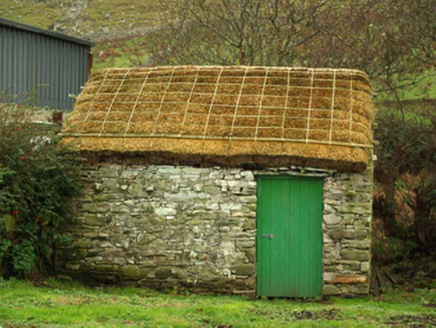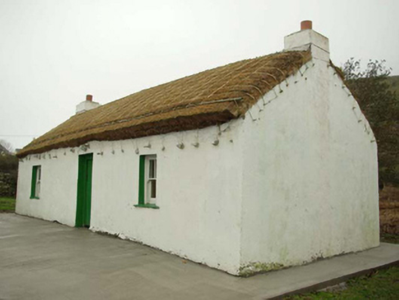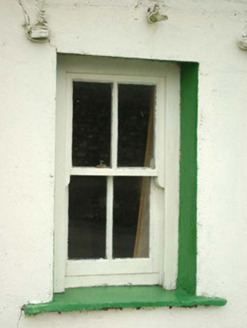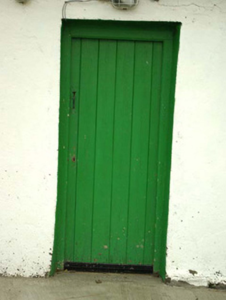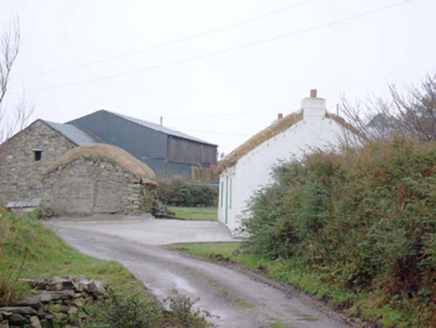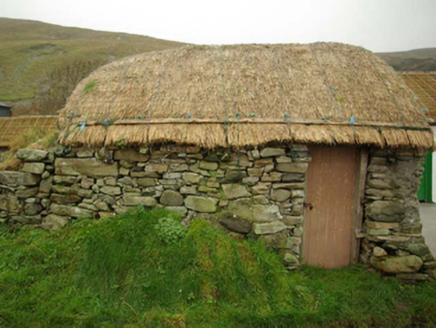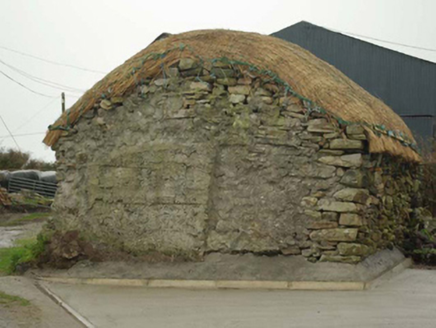Survey Data
Reg No
40841007
Rating
Regional
Categories of Special Interest
Architectural, Technical
Original Use
House
In Use As
House
Date
1800 - 1840
Coordinates
153447, 385734
Date Recorded
14/11/2007
Date Updated
--/--/--
Description
Detached three-bay single storey thatched house, built c. 1820. Pitched roped reed thatch having pegs below eaves level and with smooth rendered chimneystacks to either gable end (east and west). Painted smooth rendered wall. Square-headed window openings and cut stone sills and two-over-two pane horned timber sash windows. Central square-headed door opening with timber sheeted door. Set slightly back from road with yard to site. Set in former clachan to the north of Gleann Cholm Cille/Glencolumbkille. Detached single-bay single-storey outbuildings to the south-west and west having pitched roped thatched roof with pegs, rubble stone walls, and square-headed door openings with timber sheeted doors. Cast-iron water pump, c. 1900, to east having banded shaft, decorative moulding to spout, and fluted domed cap with acorn finial over. Handle now missing. Foundry mark to base plate, not legible.
Appraisal
This charming thatched vernacular house retains its early form and character, and is an appealing feature in the rural landscape to the north of Gleann Cholm Cille/Glencolumbkille. Modest in scale, it exhibits the simple and functional form of vernacular building in Ireland. Of particular interest in the survival of the thatched roof, which is now sadly becoming increasingly rare in Donegal. The rounded roof is a typical feature of thatched houses located close to the sea in exposed areas in the north-west of Ireland, while the pegs to the eaves were used to tie ropes (and sometimes nets) over the roof to secure it against the prevailing winds. The form of this building having chimneystacks to the gable ends suggests that this building is of the ‘direct entry’ type that is characteristic of the vernacular tradition in north-west Ireland. This house represents a fine surviving example of a once ubiquitous building type in the rural Irish countryside, and is a valuable addition to the vernacular heritage of County Donegal. It is the only surviving thatched dwelling in a nucleated cluster of buildings or a clachan that has been in existence since c. 1837 at the latest (depicted on Ordnance Survey first edition six-inch map). The two thatched rubble stone outbuildings add considerably to the setting of this house and are significant survivals in their own right. The remains of the cast-iron water pump to the east adds to the context and setting.
